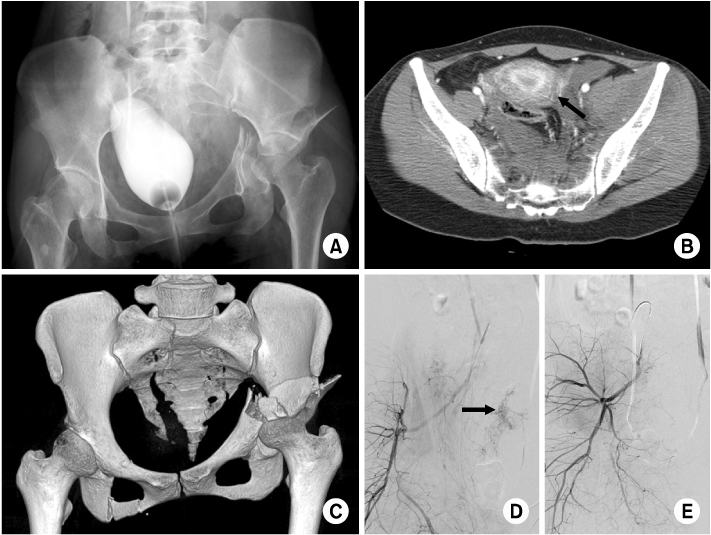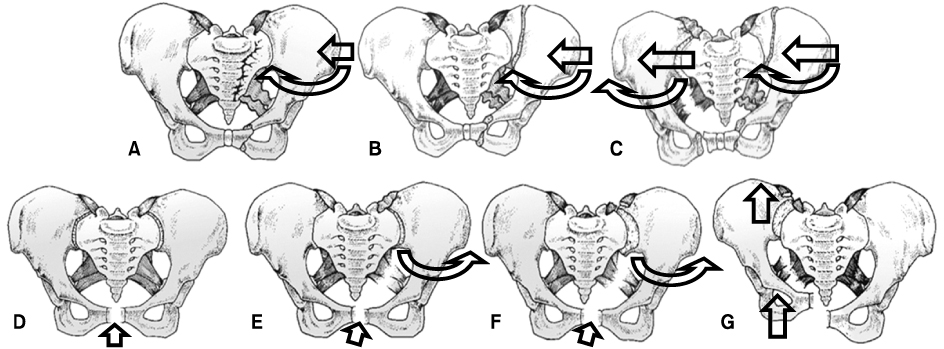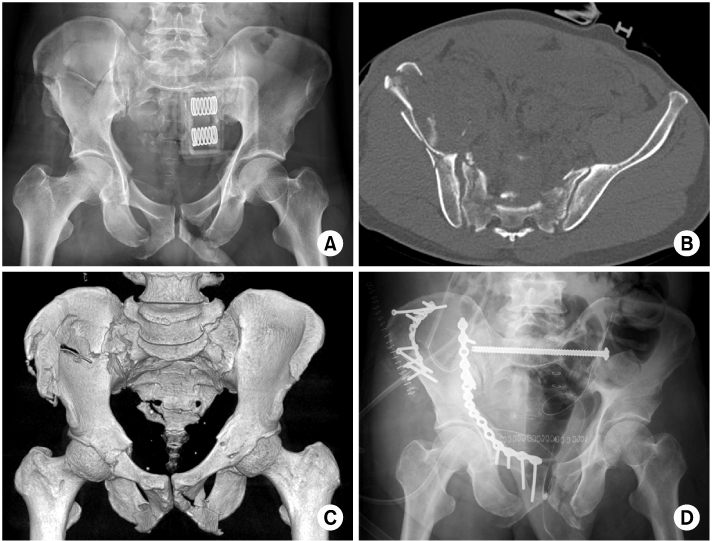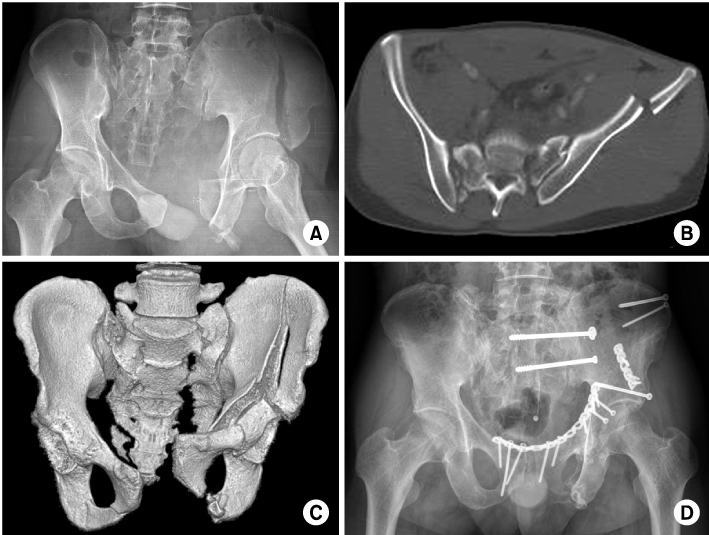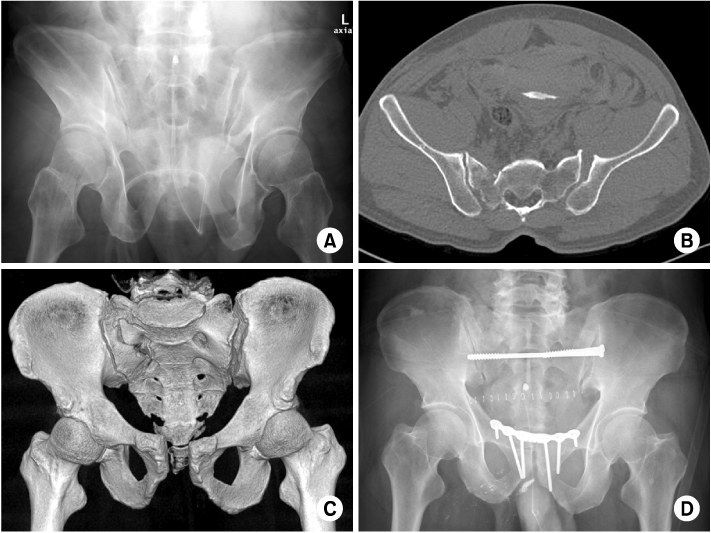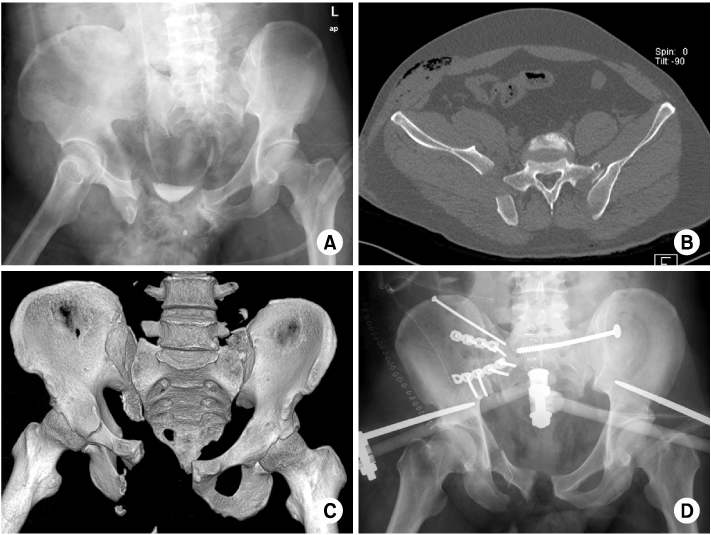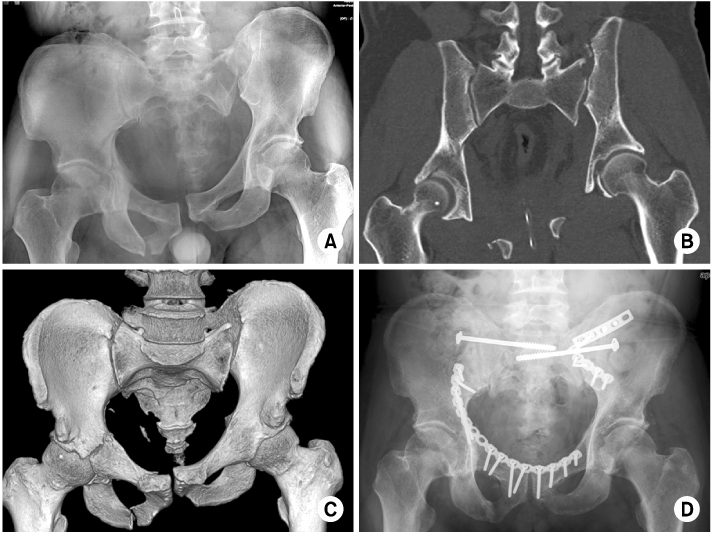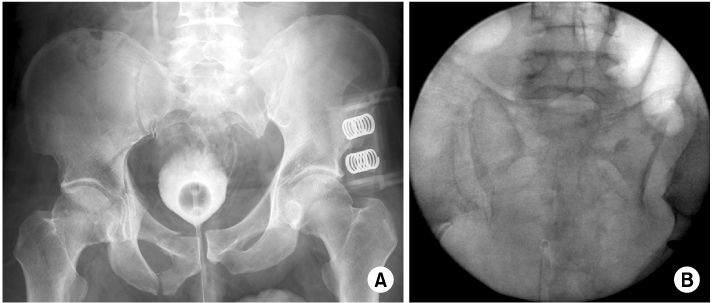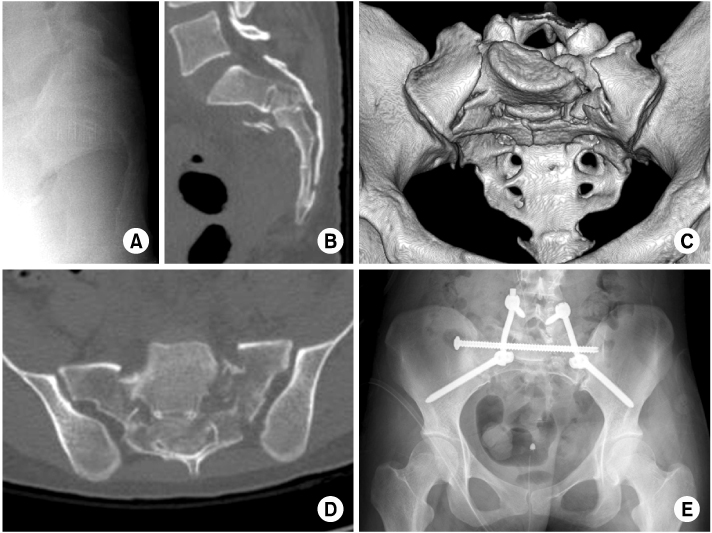J Korean Fract Soc.
2013 Jul;26(3):221-229. 10.12671/jkfs.2013.26.3.221.
Anatomy, Classification and Radiology of the Pelvic Fracture
- Affiliations
-
- 1Department of Orthopaedic Surgery, Pusan National University Hospital, Busan, Korea. osahnjaemin@pusan.ac.kr
- 2Pusan National University Hospital Trauma Center, Busan, Korea.
- KMID: 1431668
- DOI: http://doi.org/10.12671/jkfs.2013.26.3.221
Abstract
- No abstract available.
Figure
Reference
-
1. Blackmore CC, Jurkovich GJ, Linnau KF, Cummings P, Hoffer EK, Rivara FP. Assessment of volume of hemorrhage and outcome from pelvic fracture. Arch Surg. 2003; 138:504–508.
Article2. Bucholz RW, Heckman JD, Court-Brown CM, Tornetta P III. Rockwood and green's fractures in adults. 7th ed. Philadelphia: Lippincott Williams & Wilkins;2010. p. 1427–1431.3. Burgess AR, Eastridge BJ, Young JW, et al. Pelvic ring disruptions: effective classification system and treatment protocols. J Trauma. 1990; 30:848–856.4. Carroll PR, McAninch JW. Major bladder trauma: mechanisms of injury and a unified method of diagnosis and repair. J Urol. 1984; 132:254–257.
Article5. Cryer HM, Miller FB, Evers BM, Rouben LR, Seligson DL. Pelvic fracture classification: correlation with hemorrhage. J Trauma. 1988; 28:973–980.6. Demetriades D, Karaiskakis M, Toutouzas K, Alo K, Velmahos G, Chan L. Pelvic fractures: epidemiology and predictors of associated abdominal injuries and outcomes. J Am Coll Surg. 2002; 195:1–10.
Article7. Denis F, Davis S, Comfort T. Sacral fractures: an important problem. Retrospective analysis of 236 cases. Clin Orthop Relat Res. 1988; 227:67–81.8. Guillamondegui OD, Pryor JP, Gracias VH, Gupta R, Reilly PM, Schwab CW. Pelvic radiography in blunt trauma resuscitation: a diminishing role. J Trauma. 2002; 53:1043–1047.
Article9. Hearn TC, Schopfer A, D'Angelo D, et al. The effects of ligament sectioning and internal fixation on bending stiffness of the pelvic ring. Proceedings of the 13th International Conference on Biomechanics. Australia, Perth: 1991.10. Kurylo JC, Tornetta P 3rd. Initial management and classification of pelvic fractures. Instr Course Lect. 2012; 61:3–18.11. LaFollette BF, Levine MI, McNiesh LM. Bilateral fracture-dislocation of the sacrum. A case report. J Bone Joint Surg Am. 1986; 68:1099–1101.
Article12. Marcus RE, Hansen ST Jr. Bilateral fracture-dislocation of the sacrum. A case report. J Bone Joint Surg Am. 1984; 66:1297–1299.
Article13. Orthopaedic Trauma Association. Fracture and dislocation compendium. Orthopaedic Trauma Association Committee for Coding and Classification. J Orthop Trauma. 1996; 10:suppl 1. v–ix. 1–154.14. Pennal GF, Tile M, Waddell JP, Garside H. Pelvic disruption: assessment and classification. Clin Orthop Relat Res. 1980; (151):12–21.
Article15. Poole GV, Ward EF. Causes of mortality in patients with pelvic fractures. Orthopedics. 1994; 17:691–696.
Article16. Sagi HC, Coniglione FM, Stanford JH. Examination under anesthetic for occult pelvic ring instability. J Orthop Trauma. 2011; 25:529–536.
Article17. Savolaine ER, Ebraheim NA, Rusin JJ, Jackson WT. Limitations of radiography and computed tomography in the diagnosis of transverse sacral fracture from a high fall. A case report. Clin Orthop Relat Res. 1991; (272):122–126.18. Singh AK, Fleetcroft JP. Bilateral fracture-dislocation of the sacrum. Injury. 1989; 20:301–303.
Article19. Slätis P, Huittinen VM. Double vertical fractures of the pelvis. A report on 163 patients. Acta Chir Scand. 1972; 138:799–807.20. Stephen DJ, Kreder HJ, Day AC, et al. Early detection of arterial bleeding in acute pelvic trauma. J Trauma. 1999; 47:638–642.
Article21. Tile M. Fractures of the pelvis and acetabulum. Baltimore: Williams & Wilkins;1984.22. Tile M. Pelvic ring fractures: should they be fixed? J Bone Joint Surg Br. 1988; 70:1–12.
Article23. Tile M. Acute pelvic fractures: I. Causation and classification. J Am Acad Orthop Surg. 1996; 4:143–151.
Article24. Vrahas M, Hern TC, Diangelo D, Kellam J, Tile M. Ligamentous contributions to pelvic stability. Orthopedics. 1995; 18:271–274.
Article25. Young JW, Burgess AR, Brumback RJ, Poka A. Pelvic fractures: value of plain radiography in early assessment and management. Radiology. 1986; 160:445–451.
Article
- Full Text Links
- Actions
-
Cited
- CITED
-
- Close
- Share
- Similar articles
-
- Atypical Pelvic Crescent Fracture Caused by Vertical Shear Force
- Anatomy, Mechanism and Classification of the Pelivc Bone Fracture
- Treatment of Unstable Pelvic Ring Injuries
- Operative treatment of the Unstable Pelvic Bone Fracture
- Correlation between Young and Burgess Classification and Transcatheter Angiographic Embolization in Severe Trauma Patients

